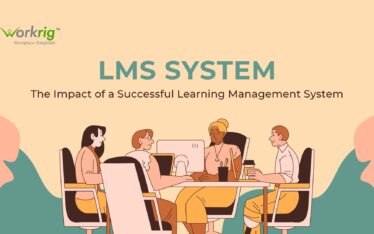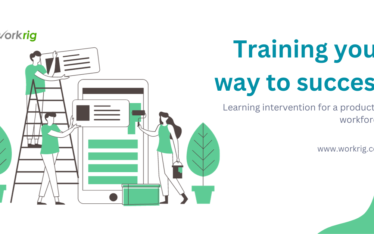Digital Onboarding of Employees in a Remote Work Environment

Introduction
Digital employee onboarding is the process of leveraging digital tools and technology to onboard new employees. Companies use digital onboarding to develop and execute a cost-effective and efficient employee onboarding process. Until a few years back, work from home (WFH) was how freelancers used to operate, but the global pandemic has stirred up things to quite an extent. Top tier companies like Google, Twitter, Amazon have made WFH a workable option for their employees. While the new normal has eased a lot of commute and health hazard stress for the employees, this paradigm shift brings a whole new challenge.
Although relatively new to many organizations, digital onboarding can be as positive and effective as an in-person process. Also, training and onboarding your new employees is central to maintaining productivity and performance. Let’s discuss a couple of principles to base your digital onboarding strategy on to ensure a stellar employee experience.
1. Begin with a Structured Pre-boarding Process
Have new employees fill out all the necessary documents online. Since waiting for employees to arrive at the office and handing them a stack of forms is not an option, you can get this task out of the way shortly after the offer letter signing. This gives new remote workers ample time to fill things out. (Plus, they won’t be distracted by boring logistics when that first day arrives.)
| Pre-boarding might seem like a basic administration task, but overlooking this critical step may jeopardize a smooth first day for your new employee |
2. Equip your Workforce
Successful onboarding starts before an employee’s first day. For a smooth start, you need to ensure that a new hire has access to all necessary equipment, like laptops, monitors, etc. The IT department would need to install all essential tools, programs, and software, including a corporate VPN solution that a remote employee may need. These setup activities — whether performed remotely or at the IT department — need to be completed before a new employee gets their computer. Your new employees need access to your systems, including email or internal chat systems, project management, time tracking, learning modules, and anything else they’ll be using for day-to-day functioning. This might sound basic, but access issues are one of the most common first-day problems.
3. Create a Clear-Collaborative Onboarding Path
Successful onboarding ensures a vivid and well-laid-out, collaborative path for employees as they enter a new company. Even in these unprecedented times, remote working shouldn’t prevent new employees from the traditional experience, and companies should be well-prepared for onboarding more employees in this remote setting. By executing new practices to support the remote working model, employers must make themselves more attractive to prospective employees while maintaining business continuity.
| Encouraging interaction and collaboration, where new hires can ask questions and offer reactions and responses creates a better sense of workplace community building. This is especially valuable in digital onboarding process, which could feel lonely at times. |
4. Automate and Align the Onboarding Procedure
This makes it relatively easy for your employees to navigate and engage in their formative days. Every learner is distinct in their ways. Understand the learning style and graph of every individual and provide them with what they need. Have virtual meetings and try and aid them at every possible instance.
5. Assign a senior or a mentor
Find a team member who is knowledgeable and friendly. The idea is not to overwhelm your new employees. Instead, the mentor should teach them the ins and outs of your organization and the ways to perform their daily tasks. Create a checklist that enlightens employees where they stand and how far they need to go.
6. Provide a good beginner experience
Start your digital onboarding with positivity and excitement. Try and create curiosity about what they are going to learn and do. Show some stats or graphs that how their work will have an impact on the organization’s growth.
7. Set timelines and work metrics
You need to have a measuring unit. Your employees may be unaware of how long it takes to complete specific tasks: set timelines and fair and realistic expectations. Perform frequent check-ins to ensure everything is going as per the schedule.
8. Request Regular Feedback and Better Your Processes with Time
Good digital onboarding is all about steady progress. This is true for both your new employees and your onboarding process as well. Make sure to check in with your new employees about their remote onboarding experience. Try and understand how the process is helping them, what’s working, and what may need improvement. Asking a mix of open yet specific questions can make it easy for the new employees to give feedback. Organizations, in turn, can identify issues and address them to make the onboarding smoother and more seamless.
| It is important to have that human contact (through Zoom or Skype) and check with the new hires. Regular check-points increases employee engagement and lends motivation |
Wrapping Up
With the global workforce becoming increasingly remote, the need for reliable and efficient digital onboarding has become a priority. However, what works in office settings might not necessarily work in a digital workspace. To make your digital onboarding program a success, map out your employee journey, establish clear communication channels, and provide your employees with all the necessary tools and equipment. It’s important to know that change doesn’t happen overnight, and it’s only with time you can iron out all kinks.



